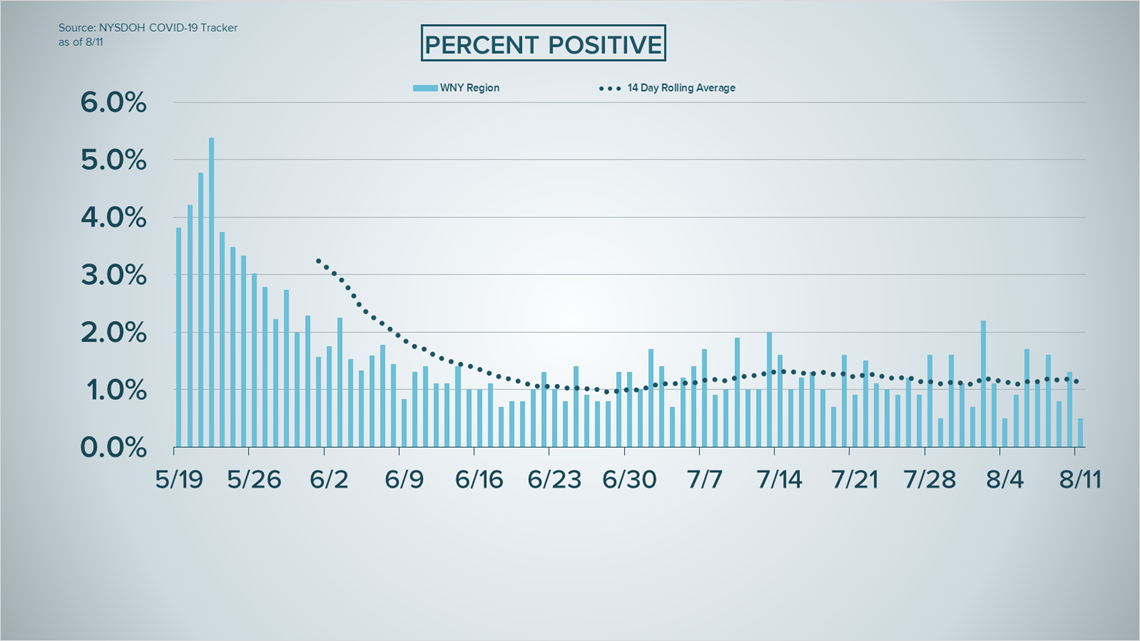ERIE COUNTY, N.Y. — Daily COVID-19 hospitalizations in the Western New York Region have dropped once again on August 11, tying for the lowest mark during the pandemic. Hospitalizations have dropped to 22 for the second time. The first time hospitalizations dropped this low was on August 8.
The Western New York Region consists of Erie, Niagara, Chautauqua, Cattaraugus and Allegany counties.
The percent positive rate in the five county region was 0.5 percent on August 11. This is the third time the region has hit that low mark. Out of 5,127 test results, there were 28 positives. The seven-day rolling average of the percent positive rate is now 1.1 percent.


New York State has also reported a new record high for the number of people tested for COVID-19 in a single day. Governor Andrew Cuomo says 87,776 COVID-19 tests were reported to New York State on August 11, and of those tested, 700 tests came back positive for a .79 percent positive rate.
"We're continuing to move forward protecting New Yorkers, slowing the spread and saving lives as the COVID-19 pandemic rages throughout much of the country and threatens the reduction in the numbers we've achieved here at home," Cuomo said. "New York is reaching new heights in its ability to track and trace the virus, and that's evidenced by the record number of tests—nearly 88,000—that were reported yesterday. As we prepare for the fall, I urge everyone to wear masks, socially distance and wash their hands, and I urge local governments to enforce state guidance on reopening."
New York State reports seven people died Tuesday from COVID-19. Two of the reported deaths were here in Erie County.
At this time, 25,218 people have died from COVID-19 in New York State.
Human coronaviruses are usually spread through...
- The air by coughing or sneezing
- Close personal contact, such as touching or shaking hands
- Touching an object or surface with the virus on it, then touching your mouth, nose or eyes before washing your hands.
Help stop the spread of coronavirus
- Stay home when you are sick.
- Eat and sleep separately from your family members
- Use different utensils and dishes
- Cover your cough or sneeze with your arm, hot your hand.
- If you use a tissue, throw it in the trash.
Lower your risk
- Wash your hands often with soap and water for at least 20 seconds. If soap and water are not available, use an alcohol-based hand sanitizer.
- Avoid touching your eyes, nose, and mouth with unwashed hands.
- Avoid close contact with people who are sick.
- Clean and disinfect frequently touched objects and surfaces.
- If you are 60 or over and have an underlying health condition such as cardiovascular disease, diabetes or respiratory illnesses like asthma or COPD, the World Health Organization advises you to try to avoid crowds or places where you might interact with people who are sick.

